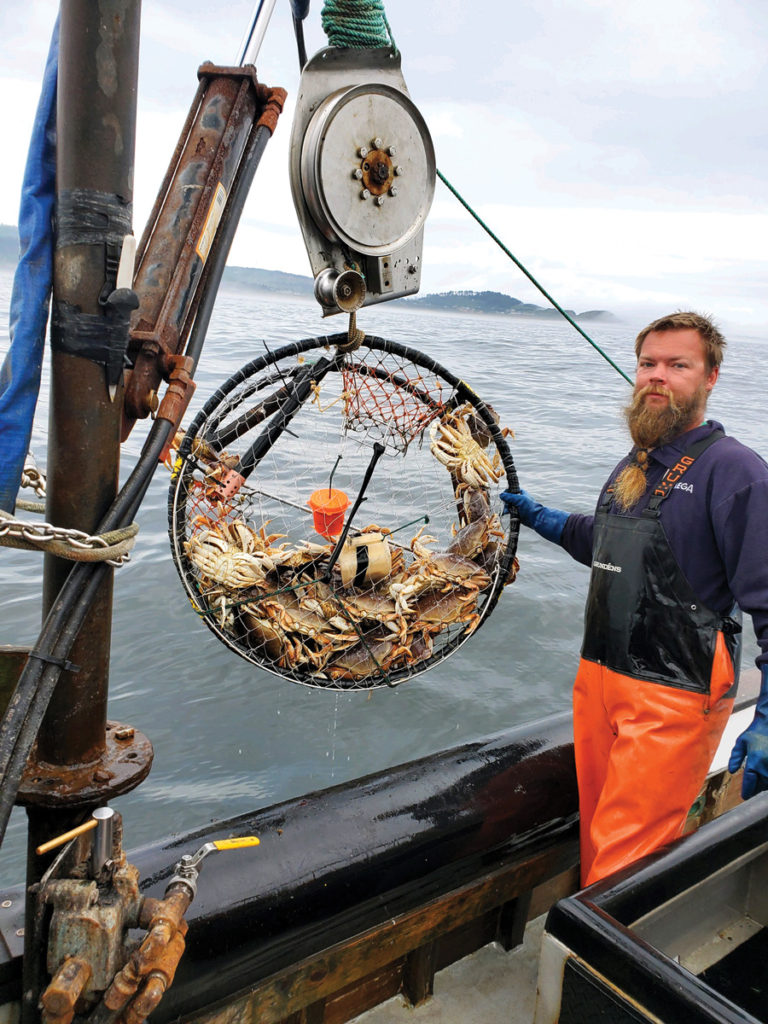
oxygen levels every 15 minutes and relays it to researchers on the Oregon State University campus in Corvallis.
By NANCY STEINBERG/Oregon State University
Last spring and summer, when some Oregon Dungeness crab fishermen dropped their pots into coastal waters, they were gathering more than just the leggy delicacy. In partnership with Oregon State University researchers, they were collecting critical data on oxygen levels in Oregon’s ocean via small sensors attached to their crab pots.
The data they gathered helps scientists learn more about the pressing problem of low oxygen, or hypoxia, in the ocean, and it could also help the fishing industry itself as crabbers learn to adjust their fishing practices in response to changes in the ocean environment.
Hypoxia has been an issue in Oregon waters for nearly two decades. Crabbers were the first to notice that something disturbing was going on in the ocean, as far back as 2002. In the late spring along much of the central Oregon coast, they were pulling up their pots to find them filled with dead crabs, or as empty as they had been when they were first pitched overboard.
ODFW

Dungeness crabs are more than a treat for coastal residents and tourists — they are the largest commercial fishery in the state, bringing in an annual average of $65.5 million over the past few years.
This critical coastal economic engine seemed to be in jeopardy. What was happening?
The crabbers turned to OSU for help.
Francis Chan, associate professor of integrative biology, and Jack Barth, a colleague from the College of Earth, Ocean, and Atmospheric Sciences, discovered that large swaths of Oregon’s nearshore ocean were experiencing unusual low-oxygen conditions, especially in the summertime. Oxygen is just as critical for marine life as it is for land-based creatures, so crabs were either fleeing the hypoxic areas or getting trapped in pots and then suffocating as low-oxygen waters moved in.
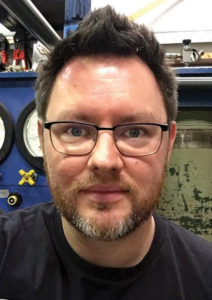
This summer, Chan, Barth and OSU oceanographer Kipp Shearman were part of a team that undertook the innovative crab pot sensor project, along with graduate student Linus Stoltz, working toward his master’s in marine resource management, and program alumnus Jeremy Childress.
Childress is now chief executive officer of Sexton Corp., a Salem, Ore. company that fabricates custom housings for underwater cameras and sensors. He conducted a nearly identical project as a marine resource management student a decade ago, advised by Shearman.
But he always wished he could have done things differently.
“I thought, when the pot comes on the back deck of the boat, is there a way for us to extract the data at that time in a way that does not impede the fishermen’s activity?” Childress said. “We want them to just fish, but how can we grab the data and store it in a way that’s cost effective and gives us that data in near real-time?”
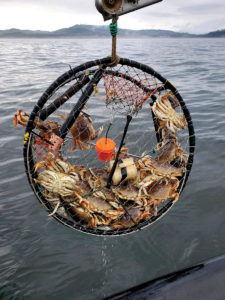
As technology improved and grew smaller and more affordable over the next decade, these goals became more and more feasible. Childress joined the research team with his old professors and the new student to give the project another try.
Current technology allows the fishermen to deploy the sensors without much distraction from their main task of catching crab. The small devices, about 18 inches long and two inches in diameter, are zip-tied to the crab pots. A compact, simple computer called a deck box lives on board the boat. The sensors attached to the pots collect and store information about oxygen content of the water every 15 minutes while the pots sit underwater, typically for five to 10 days.
When the pots are retrieved, the data is sent immediately via Bluetooth from the sensor to the deck box, and then transmitted via Wi-Fi hotspot directly to servers on the Corvallis campus.
This near real-time data collection gives scientists and the fishermen an instantaneous picture of oxygen levels at a given spot over the time that the sensor sat on the bottom. Not only does the project allow extensive spatial coverage for oxygen monitoring — the project distributed about 40 sensors last season that were deployed from Astoria to Brookings — but it also takes measurements in exactly those places where fishermen set their gear in hopes of catching crab.
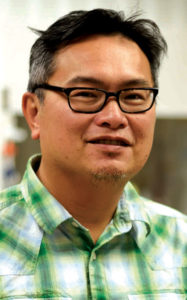
“Fishermen are some of the most observant … data-hungry people I know,” Chan said. “They’re like ecologists — they see patterns that others don’t see.”
This eagerness to know what’s happening in their fishing grounds made the crabbers enthusiastic partners. Graduate student Stoltz tells of one crabber who reached his allotted quota of crab and had to stop fishing, but continued to go out just to deploy the sensors.
“He told me he was now fishing for hypoxia,” Stoltz said.
“They can see the data that comes on board right away, so they can say, ‘Hey, if oxygen is low here and we’re not catching much crab, why would we waste our time here — we’ll move our gear 10 miles north’,” Stoltz said. “This is a tool they can use to adaptively respond to changing environmental conditions.”
Chan expects that the data will be able to be used more broadly as well, perhaps in managing Oregon fisheries.
“Managers need information on how the ocean is changing and how those changes affect their ability to make good estimates of sustainable fishing rates,” he said. “We’re trying to give them the data and tools to manage in the face of a very rapidly changing ocean.”
- Nancy Steinberg is a science communicator in the College of Earth, Ocean, and Atmospheric Sciences at Oregon State University.
- This story is reprinted with permission from the winter 2021 edition of the Oregon Stater, a publication of the OSU Alumni Association.
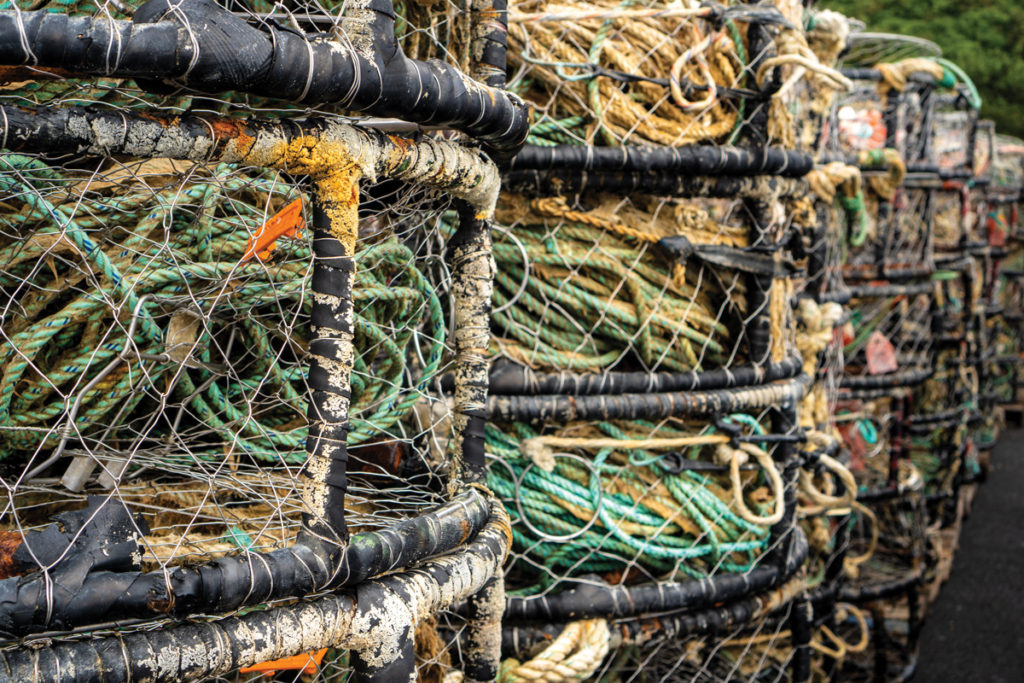
A primer on oxygen in Oregon’s ocean
Oceanographer Kipp Shearman of OSU’s College of Earth, Ocean, and Atmospheric Sciences, explains how hypoxia — low oxygen levels that create “dead zones” for marine life — develops in Oregon’s nearshore waters.
“It starts with wind-driven upwelling on the Oregon coast. That northerly wind and the rotation of the Earth cause surface water to move away from shore. In order to replace that water, deep water moves up and onshore.
“The deep water that’s brought up is cold — that’s why you don’t swim at the beach in July in Oregon.
That water is also high in nutrients, which are required to grow the phytoplankton at the base of the food chain. And that deep water is naturally low in dissolved oxygen. It’s been away from the surface for quite a while, decades. And so both biological and chemical processes have reduced the oxygen in those source waters.
“The next step is that the nutrients in the upwelled waters fuel a biological response — phytoplankton bloom, they grow, they die and they sink to the bottom, where they decompose and draw the oxygen down even lower, sometimes to hypoxic levels.” (Most decomposition in natural environments uses oxygen.)
“One area of active research is how and whether hypoxia has gotten worse in recent years. One possibility is that we are experiencing more upwelling — favorable winds as a response to climate change. This increased upwelling will then lead to more biological activity and more hypoxia.”



